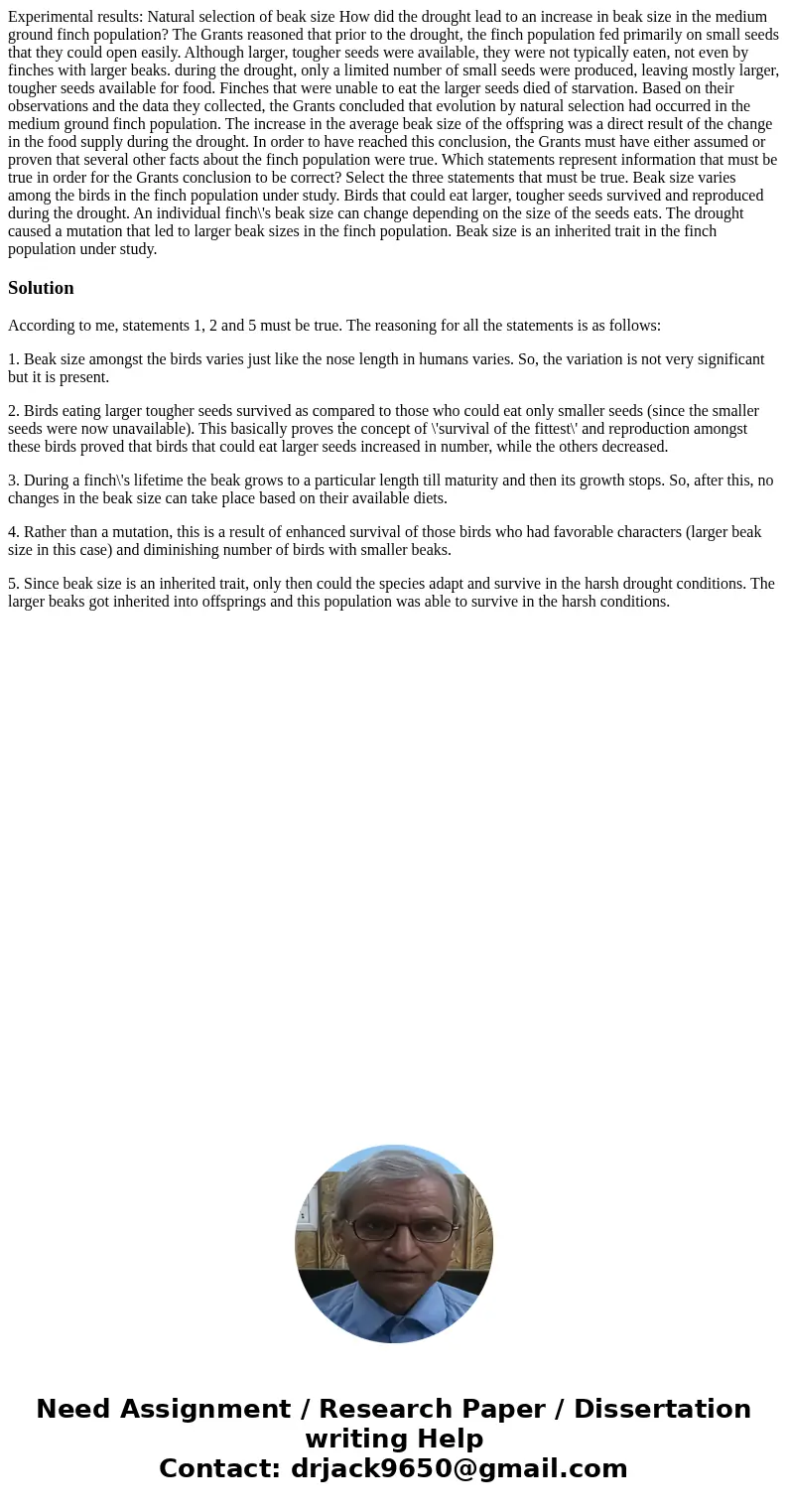Experimental results: Natural selection of beak size How did the drought lead to an increase in beak size in the medium ground finch population? The Grants reasoned that prior to the drought, the finch population fed primarily on small seeds that they could open easily. Although larger, tougher seeds were available, they were not typically eaten, not even by finches with larger beaks. during the drought, only a limited number of small seeds were produced, leaving mostly larger, tougher seeds available for food. Finches that were unable to eat the larger seeds died of starvation. Based on their observations and the data they collected, the Grants concluded that evolution by natural selection had occurred in the medium ground finch population. The increase in the average beak size of the offspring was a direct result of the change in the food supply during the drought. In order to have reached this conclusion, the Grants must have either assumed or proven that several other facts about the finch population were true. Which statements represent information that must be true in order for the Grants conclusion to be correct? Select the three statements that must be true. Beak size varies among the birds in the finch population under study. Birds that could eat larger, tougher seeds survived and reproduced during the drought. An individual finch\'s beak size can change depending on the size of the seeds eats. The drought caused a mutation that led to larger beak sizes in the finch population. Beak size is an inherited trait in the finch population under study.
According to me, statements 1, 2 and 5 must be true. The reasoning for all the statements is as follows:
1. Beak size amongst the birds varies just like the nose length in humans varies. So, the variation is not very significant but it is present.
2. Birds eating larger tougher seeds survived as compared to those who could eat only smaller seeds (since the smaller seeds were now unavailable). This basically proves the concept of \'survival of the fittest\' and reproduction amongst these birds proved that birds that could eat larger seeds increased in number, while the others decreased.
3. During a finch\'s lifetime the beak grows to a particular length till maturity and then its growth stops. So, after this, no changes in the beak size can take place based on their available diets.
4. Rather than a mutation, this is a result of enhanced survival of those birds who had favorable characters (larger beak size in this case) and diminishing number of birds with smaller beaks.
5. Since beak size is an inherited trait, only then could the species adapt and survive in the harsh drought conditions. The larger beaks got inherited into offsprings and this population was able to survive in the harsh conditions.

 Homework Sourse
Homework Sourse